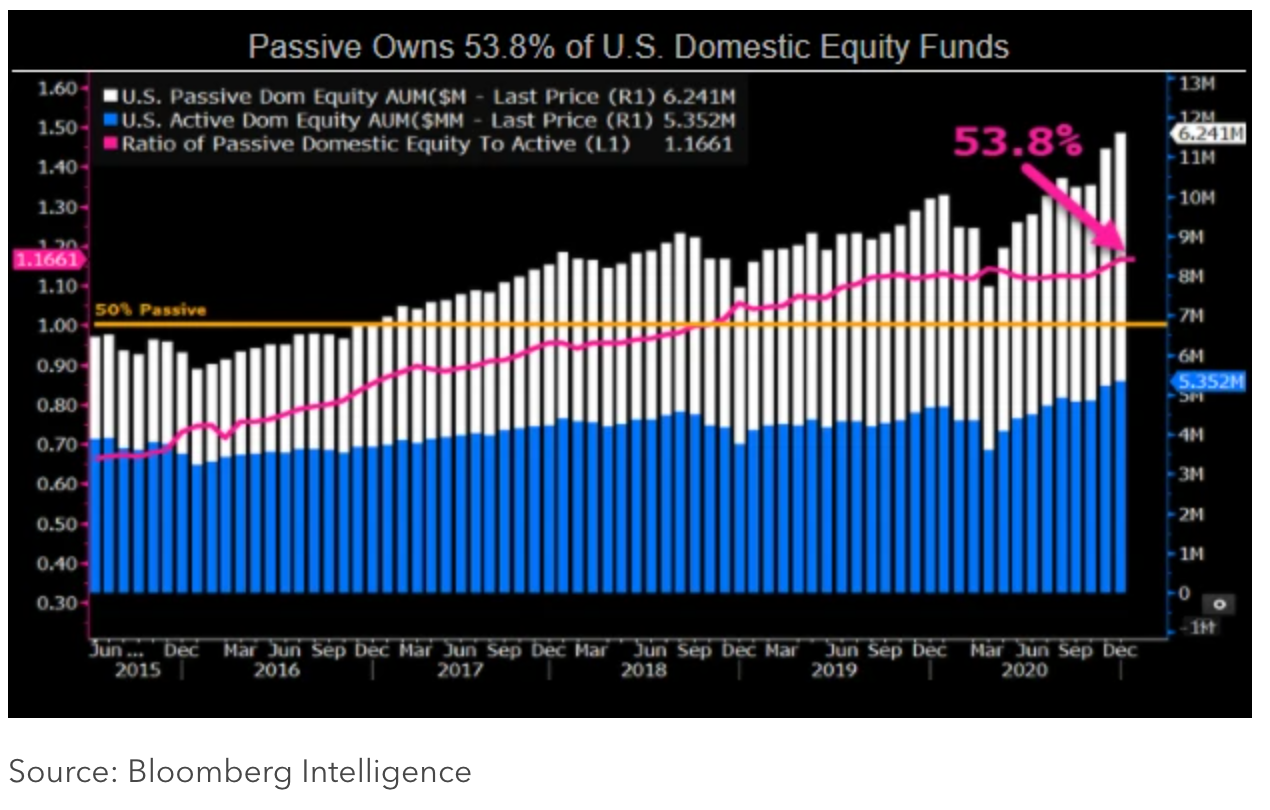Passive venture capital investing is a relatively new idea. But it’s transforming the industry. As later stage investors permeate venture capital, they are amassing index funds of startups. If the public equities market is any indication, passive investing is here to stay.

In public equities, passive investment funds constitute 54% of total dollars in the market, according to Bloomberg Reseearch.
Classically, venture capital has been an active asset class. Investors assume board seats and shoulder governance responsibility for the company, advise on strategy, introduce potential employees and prospective customers to the business, among other things.
Most startups’ teams value these benefits in the earlier stages of a business when establishing product-market fit and developing a repeatable business. The latency to liquidity (IPO or M&A) has increased from 4-6 years to 11-13 years over the past two decades.
In the later third or so of a company’s pre-exit life, active management is less relevant. The board is fully staffed, the executive team as well. Management teams resonate more with quick processes, large rounds, and a pattern of holding stocks through an IPO for a long duration; in other words, passive venture capital dollars.
There isn’t a one-to-one mapping of growth capital and passive venture capital. Some growth funds, like Redpoint’s, provide active venture capital. But a significant and rising chunk of growth dollars will be passive as a share of the market. Why? Growth rounds are fewer in number but dwarf the round size of early-stage rounds by 10x or more.
In addition, there are active index funds in the market: large volume incubators, for example. And early passive vehicles are just emerging as well, but are nascent.
While there’s no analysis yet published on the split between active and passive management in the venture industry, there will be one. Will venture capital investment dollars be split 50/50 as the public equities market is? It’s too early to say. But this is yet another sign of the maturing of the venture capital industry as an asset class.